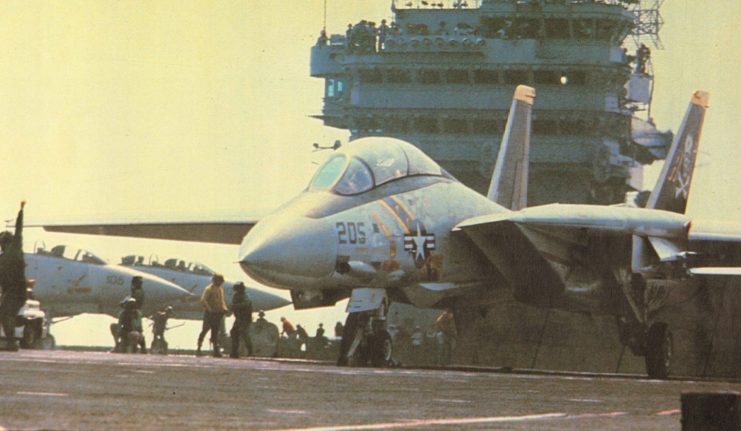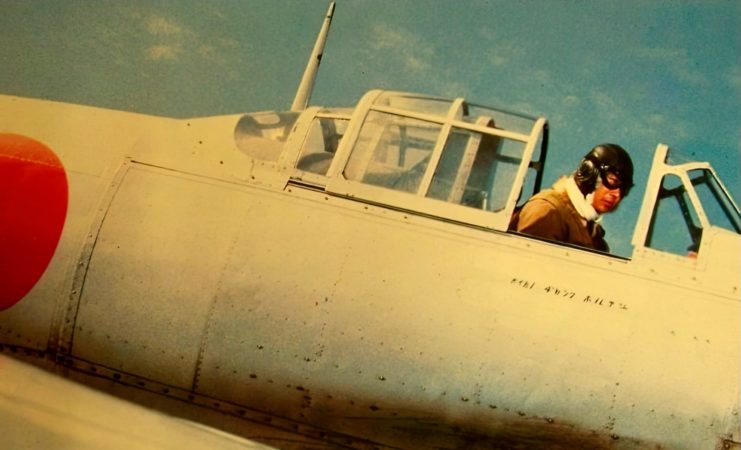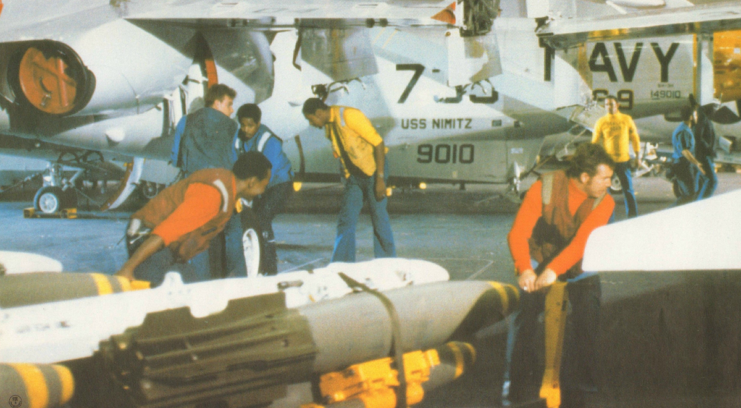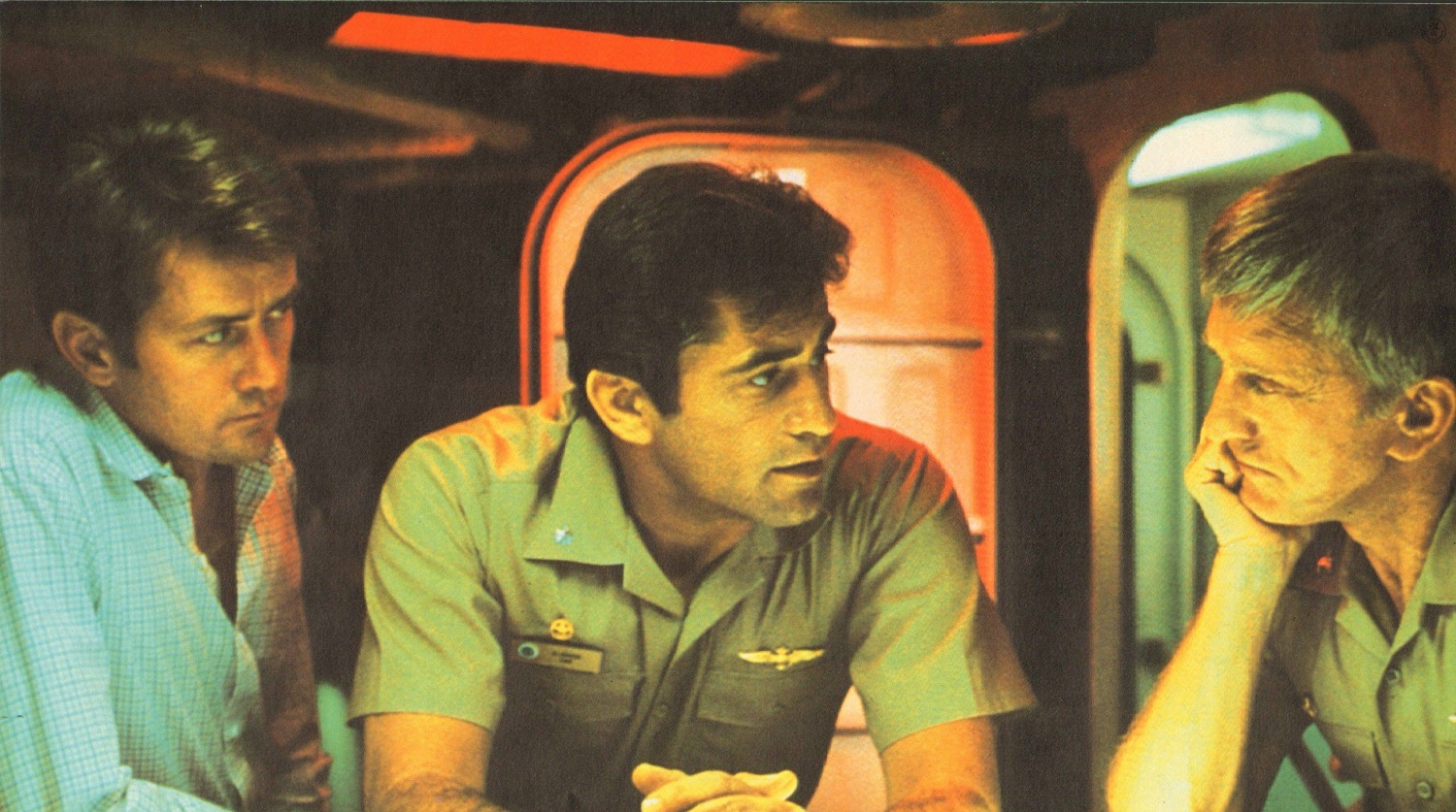The 1980 naval action flick The Final Countdown received only average reviews at best upon its release. On the surface, it looks like a standard military action movie with great aerial scenes and a rather vague plot. However, behind the scenes, the movie was produced with the full cooperation of the US Navy, who were able to use the film as a publicity stunt and a way to increase recruitment. Reviews at the time noted the plot took a backseat for the film’s heavy focus on the Navy’s hardware.
The Final Countdown is a simple time travel story, which is something that can’t be said for most time travel movies. The USS Nimitz is patrolling the Pacific in the then-current day, when it sails through a strange electrical storm that transports the vessel and all of its crew back to December 6th, 1941, the day before the attack on Pearl Harbor.
The ship immediately loses contact with its command center and other vessels, so the crew, who are unaware they have gone back in time, make the assumption that Pearl Harbor has been hit by a Soviet nuclear strike. It was the Cold War after all.
Captain Matthew Yelland (Kirk Douglas) orders a reconnaissance mission to Pearl Harbor, which mysteriously captures images of a 1940s battleship row at the naval base. After encountering two Japanese Zeros, the crew realizes they have been transported back in time.
They are faced with a dilemma: with the power of hindsight and modern technology, do they intercept and prevent the attack on Pearl Harbor, or do they let it happen to not disturb history. Eventually, they decide to attack but are transported back to the present day before they can accomplish their newly decided mission.
Plot Versus Hardware

The production and setting of the film are arguably more interesting than the plot, as the crew was placed on an operational aircraft carrier, capturing realistic shots of life aboard such a vessel. The Navy supplemented the cast with a number of Servicemembers as extras, some of whom even had lines and were featured in the credits.
The Navy utilized the opportunity to show off their best kit, including the F-14 Tomcat and the Nimitz itself. Filming such powerful aircraft did not come without challenges though, as the crew quickly found out.
In a shot where an F-14 is taking off for Pearl Harbor, the unaware film crew set up their equipment without considering the extremely powerful backwash from the aircraft’s two afterburning engines, which subsequently blew the crew and their equipment down the runway like leaves in the wind.
A Need For… Less Speed?

As the movie was made without current day CGI wizardry, the crew had to film the F-14s versus Zeros dogfights for real. This was tough, because of the major advancements made in the 40 years between the movie and WWII.
As a modern fighter jet, the F-14 moves much faster than a 1940s aircraft, even at its lowest possible speeds. The stall speed of an F-14 is 170 mph, which is quite slow thanks to its swing-wing design.
Even though the Japanese aircraft featured in the film look like Zeros, they were actually North American T-6 Texan in cosplay. These were trainer aircraft, with a maximum speed of just 210 mph. Naturally, the Tomcats had to walk along a very fine line to prevent their aircraft from stalling while ‘battling’ the vintage aircraft on camera.
This very nearly went terribly wrong at one point too, when a Tomcat pulled a maneuver at these low speeds and managed to pull up just 100 meters above the ocean. In this shot, a screeching sound effect is added to the scene. Reportedly, this screech was made by mixing the Tomcat’s engine roar with the scream of the pilot’s wife when she saw the close call.
While the movie is set in the Pacific Ocean, it was actually filmed in the Atlantic Ocean, as the USS Nimitz as part of the Atlantic Fleet at the time.
Recruiting Offices For The Navy Were Excited, Critics… Not So Much

The Navy certainly was the focus of the film and the military branch capitalized on the opportunity to increase recruitment numbers. The movie’s theatrical poster was even placed in recruiting stations around the United States.
More From Us: 5 Misleading Military Movies With Major Malfunctions
The plot clearly took a back seat for the military spectacle provided by the Navy, which resulted in movie critics giving it rather poor reviews. Movie critic Roger Ebert said, “the biggest element of interest is the aircraft carrier itself.”
